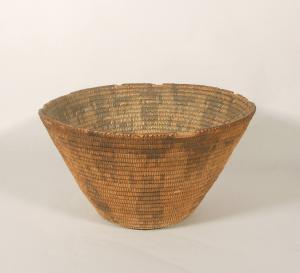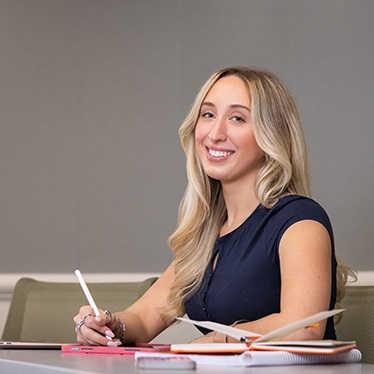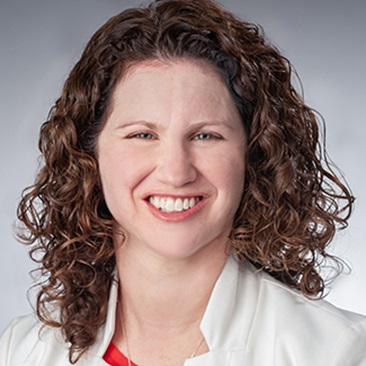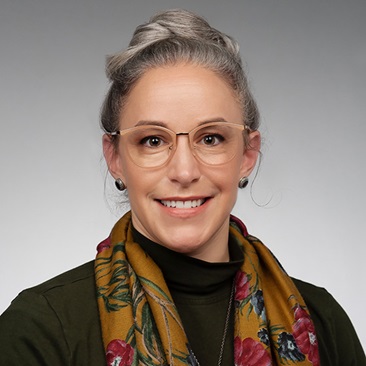Art Museum Faculty Fellow Heather Law Pezzarossi Weaves Indigenous Baskets Into Lesson Plan
April 4, 2023
The assistant professor of anthropology has provided her students with a unique research opportunity.
Three small Akimel O’odham baskets were donated to the Syracuse University Art Museum in 2006 by an alumnus and his wife. Like most items in the museum’s extensive collection, they are mostly kept in storage.
But this semester, the baskets have taken the spotlight in a class taught by Heather Law Pezzarossi, assistant professor of anthropology. Pezzarossi is one of six faculty members from across the University to have been selected to participate in a pilot Faculty Fellows Program hosted by the museum.
The Faculty Fellows Program includes a workshop, faculty presentations and requires the creation of a museum-visit lesson plan with an object-based learning assignment. It is a way for the museum to promote innovative curriculum development and facilitate the fuller integration of its collection in University-wide instruction, says Kate Holohan, curator of education and academic outreach.
“I think for me, the beauty and simplicity of object-based teaching is that it encourages curiosity and questions through simple observation,” says Pezzarossi. “When a student approaches an object for the first time, they start making a list of things that they notice. They may overlook some elements, but others stand out to them and begin to inspire questions in the students' minds: What is this made of? How was this made? How did these baskets end up here? A big part of object-based teaching is encouraging students to ask those questions that come from their initial responses in academically rigorous ways.”
Pezzarossi designed her museum plan around the baskets for her Native Americans and Museums course. The baskets were likely purchased on Akimel O’odham territory in Arizona in the second half of the 20th century, but little else is known about their origins.
The indigenous Akimel O'odham people have made baskets for harvests, storage and even holding water. They are also well-known as masterful irrigators, spreading the waters of the Gila and Salt Rivers across their homelands through a complex network of canals to produce bountiful harvests in the Arizona desert.

In the late 19th century, much of Akimel O’odham lands were claimed by settlers and rivers were diverted for western agricultural enterprises. O’odham people, unable to maintain their agricultural livelihoods, catered to a booming tourist market for basketry in the early 20th century. By mid-century however, basket prices dwindled, and materials were harder to find in the parched riverbeds. It was more cost effective to work in local cotton fields, and as a result, basketmaking was less common among the Akimel O’odham, says Pezzarossi, an anthropologically trained archaeologist who has collaborated with Indigenous communities in North America on community-led heritage and archaeological projects.
Under supervision, students have been able to closely study the baskets, examining elements such as the weave pattern, materials used and workmanship. They researched the unique combination of plant properties and weaving techniques that creates a water-tight vessel and studied how basketry knowledge passes from one generation to the next.
Additionally, they researched the teachings of contemporary O’odham basket makers and the knowledge contained in each vessel—from ecological, to mathematical, to allegorical. They highlighted a revival of this knowledge in recent years since Indigenous-led riparian reform efforts have brought the waters back to Akimel O’odham territory, says Pezzarossi.
“The assignment encourages students to ask questions about the materials, the social relationships, the places, and the dominant and not-so-dominant historical narratives with which these baskets are associated,” she says. “They are asked to think carefully about why these baskets are here to begin with. And perhaps most importantly, who is an expert in these objects? Where does that knowledge come from, and where does it lead?”
The museum’s collection is among the largest academic art collections in the United States, encompassing more than 45,000 artworks and cultural artifacts from across the globe that span 5,500 years of human history.
The museum has installed a selection of course-related objects chosen by each faculty fellow in one of its study galleries. For courses being taught in spring 2023, objects will be on display through May 2023.
By Jewell Bohlinger
Published in the Spring 2023 issue of the Maxwell Perspective
Related News
School News

Dec 4, 2025
Commentary

Dec 3, 2025
Commentary

Dec 2, 2025

